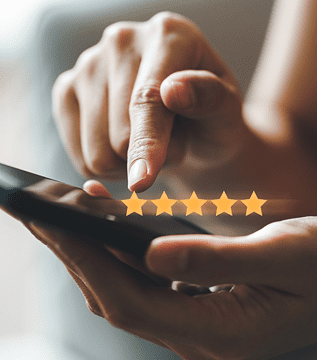
Article
How Design Can Improve Ratings for Medical Device Apps
This post was previously on the Pathfinder Software site. Pathfinder Software changed its name to Orthogonal in 2016. Read more.
When you combine cheap sensors with the computing power and interface capabilities of modern iPhones and Android smartphones, you can get powerful mobile diagnostics. When you add in smartphones’ data transmission capabilities to feed data analytics in the cloud, you have the potential to dramatically improve the state of medicine.
Last week I wrote about a project we worked on this area, VG Bio’s Vitalink, which combines wearable bio sensors, an android smartphone and cloud based predictive analytics to identify significant medical abnormalities earlier than current systems are able to do.
There is a lot of innovation happening in this space with a wide array of sensor types and applications. Here are a few other examples:

Swipesense designed a personal, portable hand-sanitizer dispenser that healthcare professionals wear on their scrubs so they can disinfect their hands at any time. The device transmits usage data wirelessly so that administrators can track compliance. The founders of Swipesense are graduates of the Healthbox Accelerator, where I’m a mentor.
Ingestible Biosensors
Proteus Digital Health has developed a feedback system that includes wearable and ingestible sensors that work together to detect ingestions and physiologic data. The sensors, each about the size of a grain of sand, contain tiny amounts of copper and magnesium. When you swallow one of these devices, you generate a voltage that powers the device and creates a signal. The digital signal is detected by an adhesive patch attached to your skin like a bandage. The Proteus platform received FDA de novo clearance in July of 2012.
Real Time Blood Loss Tracking in the OR.
Gauss Surgical has developed an iPad app geared toward surgeons to monitor and track blood loss during operations. Surgical staff will be able to use the iPad to scan gauze and other surfaces that absorb blood; the app will use an algorithm to estimate the total amount of blood on those surfaces. This app was given 510(k) clearance by the FDA in the summer of 2012.
Asthma Monitoring.
Propeller Health has developed a sensor that attaches to the top of an existing asthma inhaler to keep track of medication dosage, time and place, connects to an iOS or Android Smartphone via Bluetooth wireless. Data can be shared with Physicians for remote monitoring of symptoms. Data can also be aggregated and analyzed for asthma research and public health purposes. Propeller Health also received FDA de novo clearance in the summer of 2012.
Early Breast Cancer Screening.
Cyrcadia Health has developed a breast health system to detect tumors earlier and cut the rate of false positives and negatives. A sensor device placed in a bra measures cell temperature changes created over time by new blood vessel growth associated with developing tumors. Proprietary software that uses pattern recognition, chronology and artificial intelligence look for changes in breast tissue that could indicate the presence of a tumor.
Related Posts

Article
How Design Can Improve Ratings for Medical Device Apps

Article
Bluetooth Trends in Smartphones: Effects on Medical Devices

Article
Developing Cross-Platform Medical Device Apps with Flutter

Article
CBI Mobile Medical Apps Summit 2015